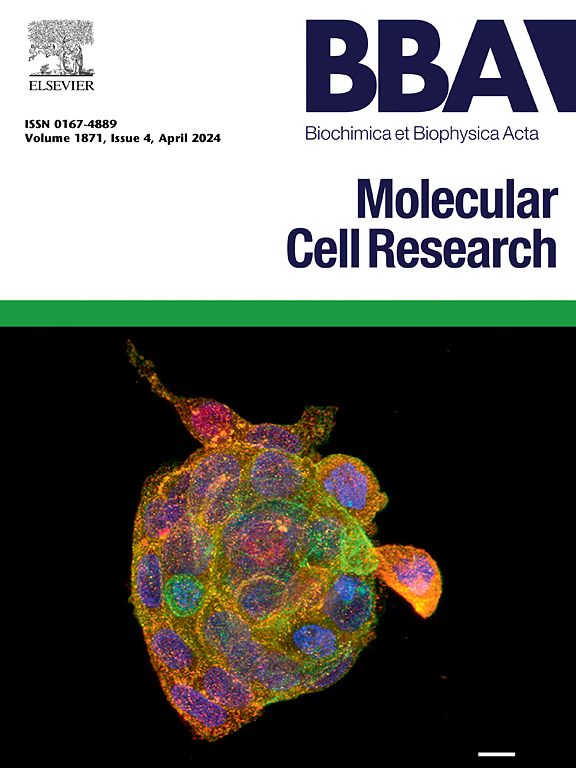Totipotent-like reprogramming: Molecular machineries and chemical manipulations
IF 3.7
2区 生物学
Q1 BIOCHEMISTRY & MOLECULAR BIOLOGY
Biochimica et biophysica acta. Molecular cell research
Pub Date : 2025-02-22
DOI:10.1016/j.bbamcr.2025.119925
引用次数: 0
Abstract
Embryonic stem cells (ESCs) exhibit remarkable pluripotency, possessing the dual abilities of self-renewal and differentiation into any cell type within the embryonic lineage. Among cultivated mouse ESCs, a subpopulation known as 2-cell-like cells (2CLCs) displays a transcriptomic signature reminiscent of the 2-cell embryonic stage, with the capacity to differentiate into both embryonic and extraembryonic tissues. These 2CLCs have served as an invaluable totipotent-like cell model for deciphering the cellular and molecular mechanisms underlying the establishment of totipotency. Accumulating evidence has indicated that a multitude of regulators including transcription factors, epigenetic modifications, and RNA regulators, exert crucial functions in the reprogramming of ESCs towards 2CLCs. In addition to 2CLCs, alternative totipotent-like cell types can be induced and maintained through the administration of single or combined chemical supplements, offering promising cell resources for regenerative medicine. In this review, we summarize the current advancements in the molecular regulations of 2CLCs and chemical manipulations of totipotent-like cells in mice, providing a foundation for understanding the regulatory networks underlying cell totipotency.
全能式重编程:分子机械和化学操作
胚胎干细胞(ESCs)表现出显著的多能性,具有自我更新和分化成胚胎谱系内任何细胞类型的双重能力。在培养的小鼠ESCs中,一种被称为2细胞样细胞(2clc)的亚群显示出一种转录组特征,使人想起2细胞胚胎阶段,具有分化为胚胎和胚胎外组织的能力。这些2clc作为一种宝贵的全能性样细胞模型,用于破译全能性建立背后的细胞和分子机制。越来越多的证据表明,多种调控因子,包括转录因子、表观遗传修饰和RNA调控因子,在ESCs向2clc的重编程中发挥着至关重要的作用。除了2clc之外,其他的全能性细胞类型也可以通过单一或联合化学补充剂来诱导和维持,为再生医学提供了有希望的细胞资源。本文综述了2clc的分子调控和小鼠全能性样细胞的化学操作的最新进展,为理解细胞全能性的调控网络提供基础。
本文章由计算机程序翻译,如有差异,请以英文原文为准。
求助全文
约1分钟内获得全文
求助全文
来源期刊
CiteScore
10.00
自引率
2.00%
发文量
151
审稿时长
44 days
期刊介绍:
BBA Molecular Cell Research focuses on understanding the mechanisms of cellular processes at the molecular level. These include aspects of cellular signaling, signal transduction, cell cycle, apoptosis, intracellular trafficking, secretory and endocytic pathways, biogenesis of cell organelles, cytoskeletal structures, cellular interactions, cell/tissue differentiation and cellular enzymology. Also included are studies at the interface between Cell Biology and Biophysics which apply for example novel imaging methods for characterizing cellular processes.

 求助内容:
求助内容: 应助结果提醒方式:
应助结果提醒方式:


